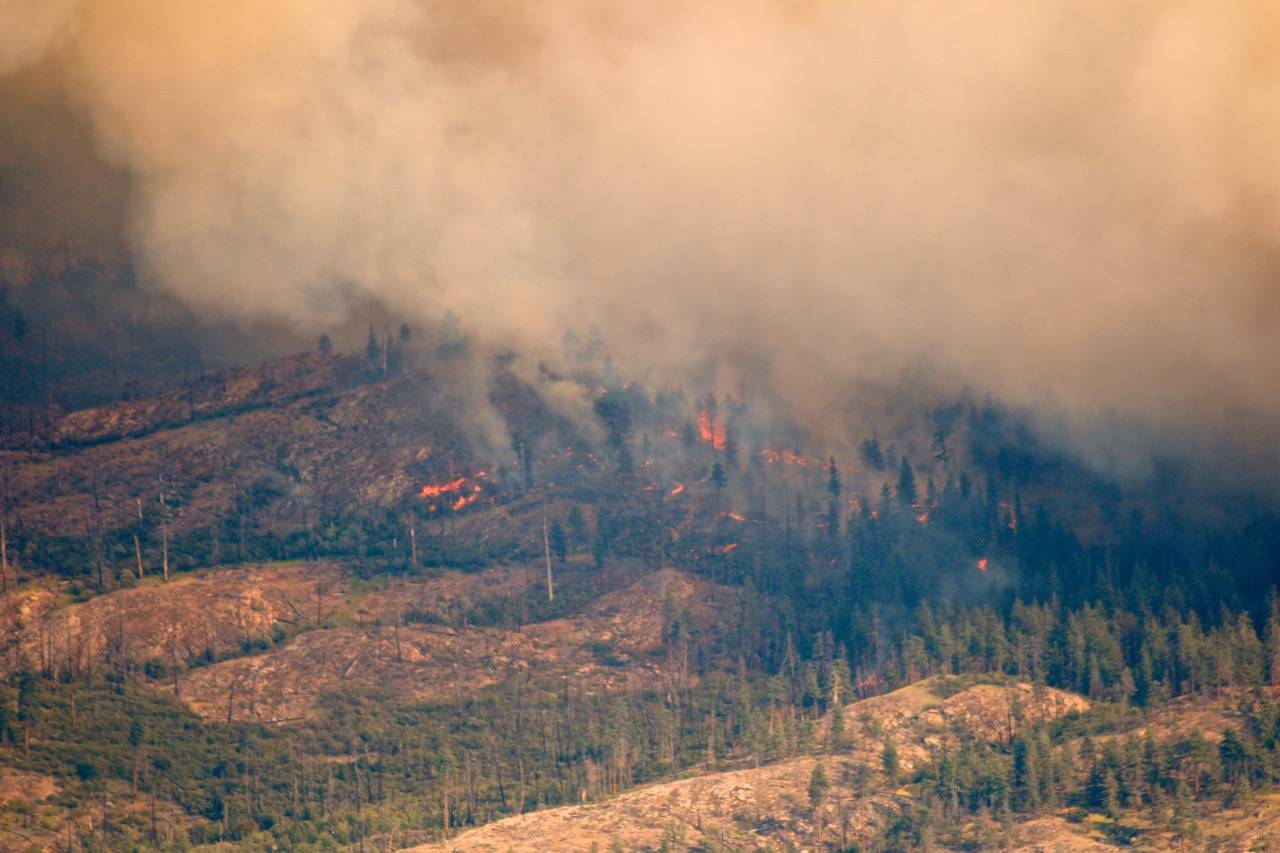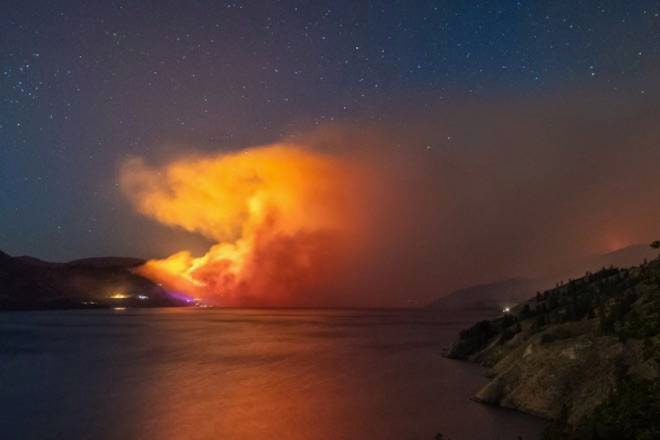The evening sky looked wrong.
From where I stood, a little to the south of Okanagan Lake Provincial Park, the colour of the smoke-filled sky was a dingy, dirty mix of orange and grey.
This was a day or two after the Mount Eneas wildfire, just south of Peachland, had started to burn.
Seeing this massive wildfire, it felt almost as if I was at the edge of hell.
Friends from out of province had been calling earlier, asking if it was still a good idea for them to come and visit us.
Others called to ask us if we were about to be evacuated.
The Mount Eneas fire is still burning and its size is estimated at 1,793 hectares, but the latest reports now are that this wildfire is under control.
The evacuation orders and alerts have been lifted.
Aside from the smell of smoke, the Okanagan Valley feels like a piece of paradise once again.
But out-of-province tourists are still calling our visitor information centres, wondering whether they should cancel their B.C. vacation plans.
Tourism-related businesses have been sending out the message that they are open for business as usual in the Okanagan.
Even in the midst of the fire season, there is still plenty to do in Summerland and in the rest of the Okanagan Valley.
It’s a positive message, and an important one. Our fire season has not put B.C. businesses on hold.
There is plenty to do for tourists vacationing in our community and in our province.
But at the same time, what we are experiencing with this year’s wildfire season is not normal.
This is something quite unusual and disturbing.
Wildfires may be a part of summer in Canada, but the frequency and size of wildfires in the past 15 to 20 years should be cause for concern.
Many British Columbians still remember the fire season of 2003 as one of the worst this province has ever experienced.
That year, nearly 2,500 wildfires burned that year, destroying more than 265,000 hectares and involving more than 10,000 firefighters and support personnel.
The cost of this firefighting effort came to $375 million.
The Okanagan Mountain Park fire alone reached 25,600 hectares and resulted in the evacuation of 33,050 people.
In addition to the 238 homes lost or damaged by the fire, 12 wooden trestles along the Myra Canyon route were destroyed and two steel trestles in the area were damaged.
Since then, we have seen worse wildfire seasons.
In 2010, wildfires destroyed 330,000 hectares and in 2014, roughly 360,000 hectares were burned during the wildfire season.
Both years were worse than 2003, but they pale in comparison to the 2017 season.
Last year, wildfires in B.C. burned 1.2 million hectares, or nearly five times as much land as in 2003.
The cost of fire suppression last year, at $568 million, was nearly double the costs of firefighting in 2003.
And the number of people displaced or evacuated, at 65,000 people, is more than twice the number evacuated in 2003.
So far during this wildfire season, the province has had 870 wildfires, destroying 57,871 hectares.
But these statistics are to the end of July, and if previous years are any indication, we still have at least six more weeks of the wildfire season.
This is a time to consider how to respond to the large fires we have been witnessing in recent years.
It’s a time to discuss long-term strategies and solutions.
It’s a time to learn the steps to take when the fires burn nearby.
Our summer wildfire seasons are becoming more severe.
This is not normal.
John Arendt is the editor of the Summerland Review.
To report a typo, email:
news@summerlandreview.com.
news@summerlandreview.com
Like us on Facebook and follow us on Twitter.

